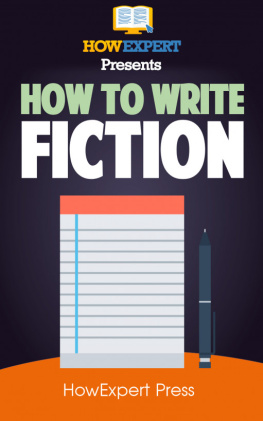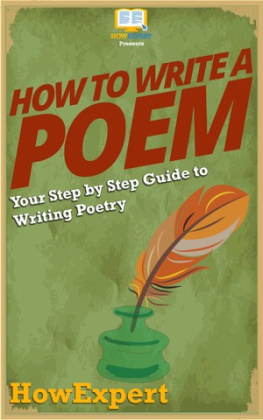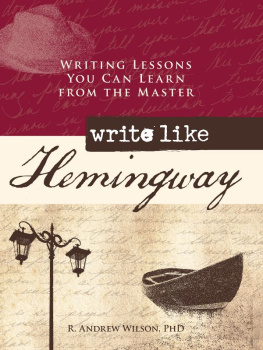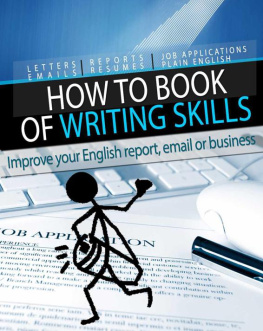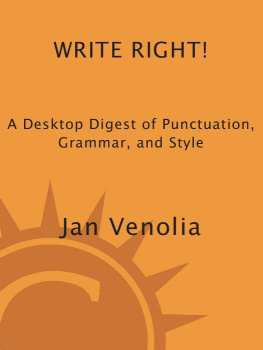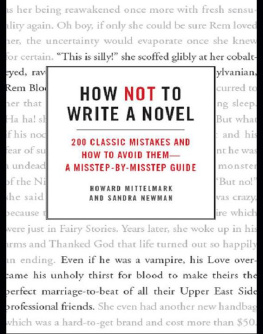First published 2014
Exisle Publishing Pty Ltd
Moonrising, Narone Creek Road, Wollombi, NSW 2325, Australia
P.O. Box 60490, Titirangi, Auckland 0642, New Zealand
www.exislepublishing.com
Copyright 2014 in text: Howard Gelman
Howard Gelman asserts the moral right to be identified as the author of this work.
All rights reserved. Except for short extracts for the purpose of review, no part of this book may be reproduced, stored in a retrieval system or transmitted in any form or by any means, whether electronic, mechanical, photocopying, recording or otherwise, without prior written permission from the publisher.
A CiP record for this book is available from the National Library of Australia.
ePub ISBN 978 1 7559 172 6 (Version 1.0)
Print ISBN 978 1 921966 51 4
Design and typesetting by Christabella 2esigns
Disclaimer
While this book is intended as a general information resource and all care has been taken in compiling the contents, this book does not take account of individual circumstances and is not in any way a substitute for professional advice. Always consult a qualified practitioner or therapist. Neither the author nor the publisher and their distributors can be held responsible for any loss, claim or action that may arise from reliance on the information contained in this book.
HOW TO USE THIS BOOK
So you want to write something. You feel an urge to tell a story, perhaps about your ancestors and how they came here. Maybe its a story about the company you started and the legacy you want to leave your children. Of course, some of us are forced to become writers. You may have been drafted to write the newsletter for your volunteer organisation, which will be crucial in the next donation drive. Or perhaps your boss wants a tightly written, complete factual account of the companys activities that will be the next quarterly report. Get out your writing tools and start.
Or you might want to jump into the world of the Internet. You have a lot to say about some pretty important ideas in your daily work. Youd like to open a blog and see if your ideas match or provoke others in your field. You start to think of those essays compiled in English classes. Do you remember how to do it? It wasnt easy and you vowed to put all that school stuff behind you. But now it seems it might come in handy. How do you write an essay anyway?
There are a lot of reasons for us to look at our writing skills critically and decide to improve and upgrade our ability to communicate through writing. Everyone Can Write gives you the tools to achieve your writing goals. However, I dont expect anyone to read it from beginning to end, although that wouldnt be a bad idea. If you jump to sections that answer your questions, thats a good way to get useful information and you can re-read any section for a refresher.
Part 1, The Basics, gives you the basic yet essential techniques and rules to get started with your writing. Chapter 1, Technique, is simple. I show you how to be your own editor and to make decisions about your writing. To do this, Ive organised a three-step process, called pre-write, free write, rewrite. Understanding how to apply this formula will cut through most of the difficulty we face in writing. I also explain how to distinguish between being a writer and being an editor, which is a key to understanding the writing process.
Chapter 2, Grammar, explains the rules simply and clearly so you can immediately apply them to your writing. These instructions are the main elements in the editing task. All of these items are meant to promote your rewriting skills. What, you dont want to know grammar? You only want to know how to write. I understand any reticence about a book that promotes learning grammar, however the two are connected. In Part 1 I give you practical information that will definitely help you to write more clearly. This includes tips Ive put together in my years of being an editor, writer, teacher and writing coach. These instructions will work if you apply them. Do it and tell me what happens.
Part 2, Types of Writing, forms the core of the book. Chapters 3, 4 and 5 explain how to impart facts in a report; how to tell a story in a narrative; and how to develop an argument in an essay. In these chapters I discuss the basic structure of each approach to writing.
The report is the tool of commerce and business, and presents a factual approach to information communication. Knowing the difference between the report and the essay is essential to achieving your communication goals. What usually happens in business is choosing the wrong structure for disseminating information. We end up with long-winded documents that overload us with facts and figures, when we are looking for a quick and clear answer to a request.
The narrative stands alone. It is storytelling and sometimes we mistake the fictional use of narrative for the non-fiction one. In this book we are not discussing fiction, poetry, playwriting or screenwriting. In non-fiction narrativesbiography, autobiography or memoirwe have to tell real stories with actual people, places and situations. It can be just as dramatic and intense as the more creative approach of fiction, but the rules are different. In fact, telling a true story may be the most elemental writing task. It even pops up in essays and reports.
Many of us dealt with the essay either in high school or tertiary education. We may even have some misgivings about taking up this task again. But it is the standard method for explaining an argument and the structure is familiar to most of you. If you read magazines or newspaper columnists or the latest bloggers, you will be familiar with the essay format. For the budding e-writer who wants to carve out an Internet spot, learning how to hone a well-written essay is the key to communication success. Fortunately, there is a simple method to conquer this dreaded exercise of our schooldays.
Start with any one of these approaches to writingreport, narrative or essay. The key is to know whom you are writing for and what your goals are. When you write that family history for all your relatives, you will have to tell them where and when the story began. If you are getting information to your business clients you will need to understand the business box of report writing. If you are demonstrating how to think through hypotheses, write an essay. Choose your format and then you can apply the rules outlined in Part 1. Follow the rules and you will succeed in writing clear, easy-to-read and interesting documents.
Chapter 6, Email writing, deals with communicating succinctly and successfully in an email. I show how my writing method, using bullet points and appropriate spacing, can help you become a better communicator in what can often be an ill-considered form of communication.
A word about style. I believe style is something writers have to want to develop. That is, you have to be aware of how you write and how sentence structure and word placement can affect your writing. I call this the architecture of writing and I have several examples about how to build a piece of writing and maintain clarity.
The book ends with the Guide to usage chapter, an alphabetical listing of specific items with explanations. These are ones I think most often challenge the everyday writer. This could be the difference between its and its or when to use among or between.
Everyone Can Write is deliberately short and concise. I want it to be portable, something you can carry in a briefcase or keep in a drawer at work. I wouldnt mind if you carried it in your back pocket and opened it only when you need confirmation that a split infinitive is okay in the sentence you just wrote. I also want the book to be an easy read and offer unambiguous explanations. Thats as complicated as I hope this will get, except Id like you to use it often and discover for yourself what works and what doesnt. So stop looking at a blank screen and start writing.


